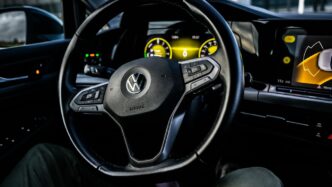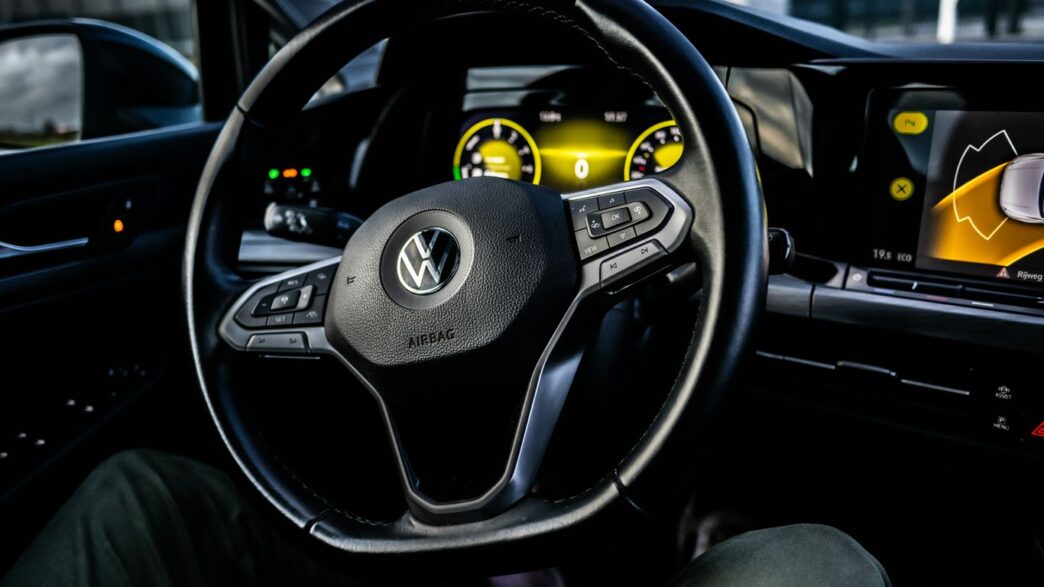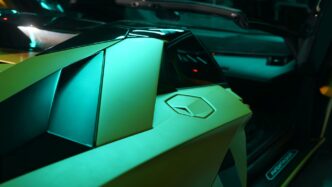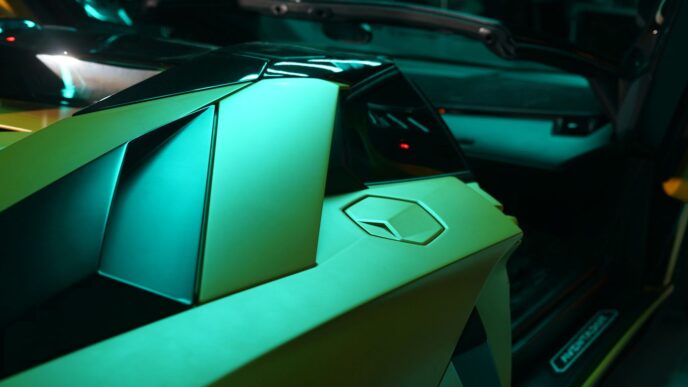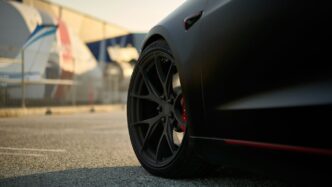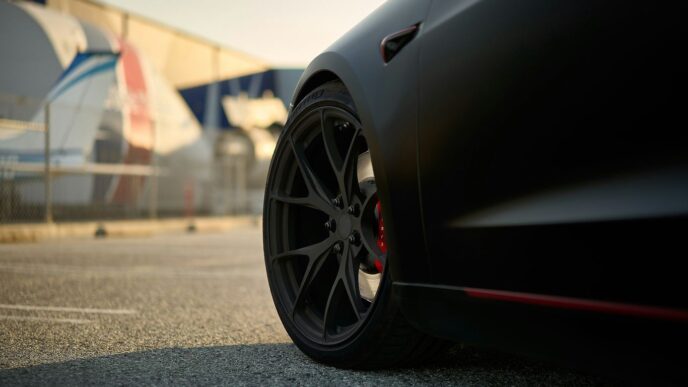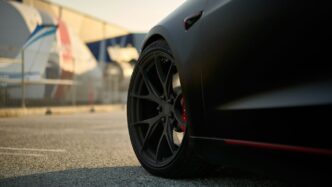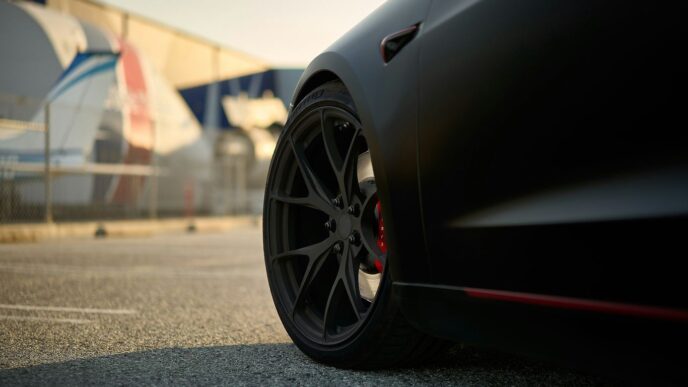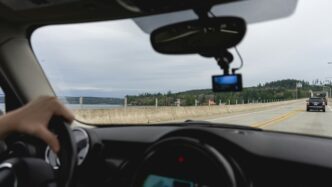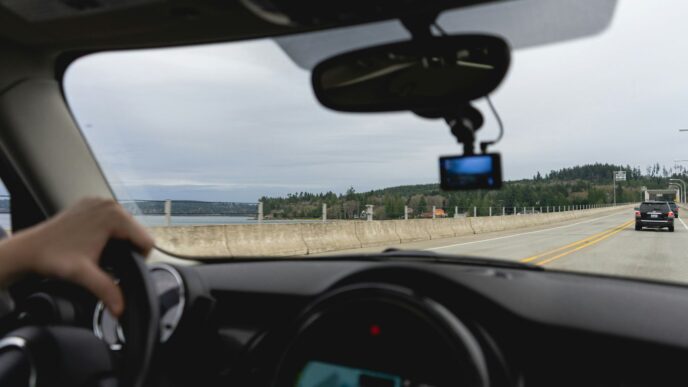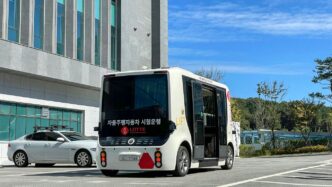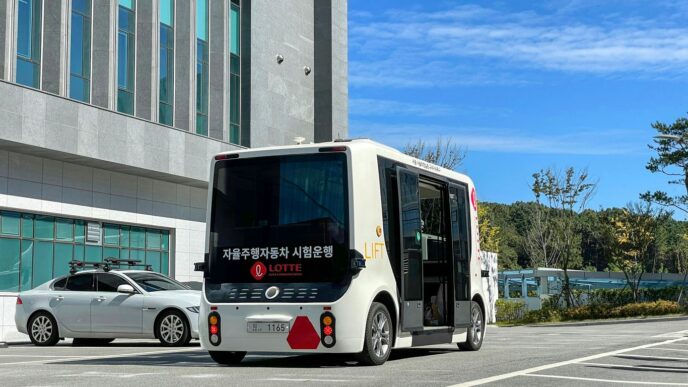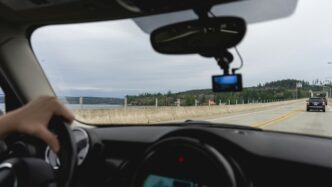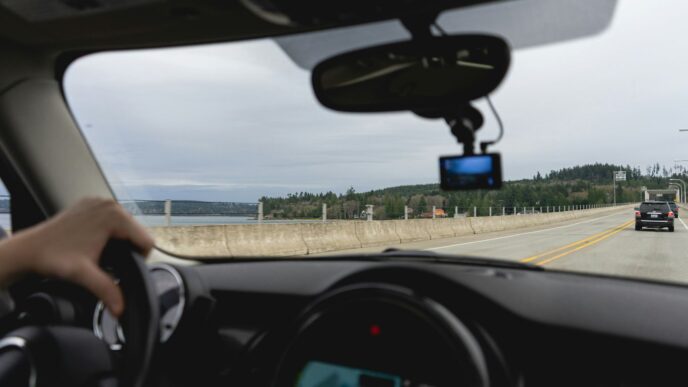Volkswagen Uber Partnership Unveiled

So, Volkswagen and Uber are teaming up, and it sounds pretty big. They’re planning to put self-driving versions of the electric ID. Buzz van on the road. This partnership aims to really change how we get around cities, making it more electric and automated. It’s not just about a new car; it’s about rethinking ride-sharing from the ground up.
Revolutionizing Ride-Sharing with Electric Autonomy
This whole move is about making transportation cleaner and smarter. By using the all-electric ID. Buzz, Volkswagen is cutting down on emissions, which is good for city air quality and helps meet environmental goals. Plus, sharing the costs of developing this new tech with Uber makes the whole idea more practical. It’s a way to push electric vehicles and self-driving tech forward together.
Volkswagen ID. Buzz: The Future of Robotaxis
The ID. Buzz itself is a pretty cool vehicle. It’s a modern take on their classic Microbus, built specifically for electric power. It’s got a decent battery range and can charge up pretty fast, which is important for a taxi. The inside is designed to be flexible for passengers, making it a good fit for shared rides. Volkswagen is even building these autonomous versions right on their regular production lines, which they say is more cost-effective and better for the environment than modifying existing cars.
Global Rollout Plans for Autonomous Mobility
They’re not just talking about this; they have a plan. The first place to see these self-driving ID. Buzz taxis will be Los Angeles in 2026. They’re aiming to have them running without human drivers by the end of that year. After that, they plan to bring them to European cities by 2027. It sounds like a phased approach, starting with a pilot program and then expanding from there.
The Autonomous ID. Buzz: A Technological Marvel

So, Volkswagen and Uber are teaming up, and they’re putting the ID. Buzz, that cool electric van that looks like a modern take on the old VW Bus, to work as a self-driving taxi. It’s pretty wild to think about. This isn’t just some concept; they’re actually planning to roll these out. The tech packed into these vans is what makes it all possible, and honestly, it’s kind of mind-blowing.
Advanced Sensor Suite for Unrivaled Perception
These ID. Buzz vans are loaded with sensors. We’re talking about 13 cameras, 9 LiDAR units, and 5 radar systems. That’s a whole lot of eyes and ears for the van. All these sensors work together to create a super detailed picture of what’s going on around the vehicle, like, all the time. This setup generates about five gigabytes of data every second. That’s a ton of information that the system uses to figure out where other cars are, where pedestrians are, and basically how to get from point A to point B without bumping into anything. It’s designed to be really good at spotting things, even in tricky situations.
GPS-Independent Navigation for Complex Environments
One of the really neat things about this system is that it doesn’t rely solely on GPS. You know how sometimes your GPS signal gets wonky in cities with tall buildings, or if you’re in a tunnel? Well, the ID. Buzz AD has its own mapping tools. This means it can figure out where it is and how to get around even if the GPS signal isn’t perfect. This is a big deal for making sure the vans can operate reliably in all sorts of places, not just wide-open highways. It’s about being smart enough to handle the messy, unpredictable parts of city driving.
Sustainable Manufacturing for Eco-Conscious Transport
Volkswagen is building these autonomous ID. Buzz vans right on their regular production lines. This is different from some other companies that might take existing electric cars and then add the self-driving tech later. By building them from the ground up as autonomous vehicles, VW figures they can make them more cost-effective. Plus, they’re using materials that can be recycled and designing the vans with electric power in mind from the start. This approach helps cut down on waste and makes the whole process a bit kinder to the planet, which is pretty important when you’re talking about putting thousands of new vehicles on the road.
Volkswagen’s Commitment to Autonomous Driving
Volkswagen isn’t just dipping its toes into the autonomous driving pool; they’re diving headfirst, and it’s pretty clear they mean business. They’ve been working on this for a while, actually. You might have heard of Moia, which is basically Volkswagen’s own mobility service. It’s been their testing ground, so to speak, for figuring out how to get these self-driving cars working in the real world, especially in cities.
Moia: Volkswagen’s Mobility-as-a-Service Pioneer
Moia has been running a fleet in Hamburg, Germany, with about 30 of these ID. Buzz vans. Now, these aren’t fully driverless yet – there are still safety drivers behind the wheel, just in case. But this is where they’re gathering all the important data and learning how to handle all sorts of tricky situations you find in a busy city. It’s all part of their plan to eventually integrate these vehicles into everyday public and private transport.
In-House Technology Development and Integration
What’s interesting is how much tech Volkswagen is building themselves. They’re using Mobileye’s platform, sure, but they’ve also got their own mapping tools. This means they’re not totally reliant on GPS, which is a big deal when you’re driving in tunnels or areas with spotty signals. The ID. Buzz AV is packed with sensors – 13 cameras, 9 LiDAR units, and 5 radar systems. All this tech churns out about five gigabytes of data every second, which is what allows the car to ‘see’ and understand its surroundings in real-time. Plus, they’re building these autonomous ID. Buzz vans on their own production lines, not just slapping new tech onto old car bodies. They say this makes things cheaper and better for the environment.
Phased Approach to Safety Driver Removal
Volkswagen is taking a careful, step-by-step approach to going fully driverless. They’re starting with safety drivers, like in the Hamburg tests. The big goal is to remove those safety drivers from the Los Angeles operations by the end of 2026. After that, they’re looking at rolling out similar fully autonomous services in European cities by 2027. It’s a measured rollout, designed to build confidence and iron out any kinks before they go wide.
Uber’s Role in Autonomous Vehicle Deployment
So, what’s Uber’s part in all this? It’s pretty big, honestly. They’re not just letting Volkswagen do all the heavy lifting. Uber brings its massive network of people who need rides, which is kind of the whole point of a ride-sharing service, right? They’re the ones who know how to connect drivers with passengers efficiently, and they’re applying that know-how to these new self-driving vans.
Leveraging Global Ride-Hailing Network
Think about it: Uber has spent years figuring out the best ways to get people from point A to point B in cities all over the world. They’ve got the apps, the algorithms, and the experience dealing with millions of trips. Now, they’re taking all that knowledge and plugging it into the ID. Buzz. This means when these autonomous vans start hitting the streets, Uber’s existing system will be ready to dispatch them. It’s like they’re upgrading their fleet from human drivers to robot drivers, but keeping the same smart dispatch system.
Enhancing Passenger Experience with Smart Features
Uber isn’t just about getting you a ride; they want the ride itself to be good. For the ID. Buzz, they’re planning some cool stuff. Imagine hopping in and using your phone to unlock the door – no fumbling for keys. There will be cameras inside, not to spy on you, but to help the system understand what’s happening and keep things safe. Plus, there are plans for AI to help out if something unexpected happens, and of course, an easy way to stop the car if needed. It’s all about making sure that even though there’s no driver, you still feel secure and comfortable.
Collaborative Cost-Sharing for EV Development
Building self-driving electric cars isn’t cheap. By teaming up, Volkswagen and Uber can share the costs. Volkswagen is building the vans, and Uber is helping to make sure they’re ready for the ride-sharing world and figuring out how to make the whole operation financially sensible. This partnership means they can invest more in the technology and get these vehicles out to more people, faster. It’s a smart way to tackle the big expenses involved in bringing this kind of future tech to everyday life.
ID. Buzz: Iconic Design Meets Future Mobility
It’s pretty wild to think about how far car design has come, right? Volkswagen is really leaning into that nostalgia with the ID. Buzz, but they’re not just rehashing the past. They’ve taken that classic, beloved Microbus vibe and completely updated it for the electric age. This isn’t just a van; it’s a statement about where we’re headed with transportation.
Reimagining the Classic Microbus for the Electric Age
Remember those old VW buses? The ID. Buzz captures that same friendly, approachable look, but with all the modern tech you’d expect. It’s built on Volkswagen’s special electric car platform, which means it’s designed from the ground up to be electric. This gives it a really clean look and makes it super efficient. Plus, they’ve used materials that are better for the environment, like recycled stuff, which is a nice touch.
Optimized Interior for Shared and Autonomous Travel
When you step inside the ID. Buzz, you’ll notice it’s built for people. The seats can be moved around, so whether you’re going solo or with a group, there’s plenty of room. It feels really open and airy, which is great for longer rides. They’ve used tough materials inside, too, so it can handle a lot of use, which makes sense for a ride-sharing vehicle. It’s all about making the space work for whoever is using it, whether it’s a family trip or a quick ride across town.
Performance and Practicality in an Electric Van
Don’t let the retro looks fool you; this thing is modern under the hood. It’s got a good-sized battery that gives it a decent range, so you won’t be constantly looking for a charger. And when you do need to charge, it can do it pretty quickly. You can even get it with all-wheel drive if you need a bit more power. It’s a practical vehicle that’s also fun to drive, and it’s all electric, so no gas fumes.
Commercial Launch and Market Expansion
So, when can we actually start hailing these futuristic VW ID. Buzz robotaxis? The plan is to kick things off with a pilot program in Los Angeles in 2026. This won’t be just a small test, either. They’re aiming for a pretty significant rollout, with the goal of having thousands of these autonomous vans operating across the US within the next decade.
Think of it like this:
- 2026: The first autonomous ID. Buzz vehicles hit the streets of Los Angeles, available through Uber’s app. Initially, these will be for on-demand ride-pooling, meaning you can grab a ride when you need one, kind of like a regular Uber but without the driver.
- Late 2026: Volkswagen plans to start phasing out the safety drivers in Los Angeles. This is a big step towards fully driverless operation.
- 2027: The expansion continues into select European cities. This marks the beginning of their international commercial deployment.
It’s a phased approach, which makes sense. They’re starting in a major US city known for its tech adoption and then moving on to Europe. This gives them time to iron out any kinks and gather data before going nationwide. The idea is to make this a common sight, not just a novelty. The ultimate goal is to have a widespread, reliable autonomous ride-sharing network. It’s a bold plan, but seeing how far the tech has come, it feels more achievable than ever.
The Road Ahead
So, what does all this mean for us? Basically, Volkswagen and Uber are teaming up to put self-driving ID. Buzz vans on the road, starting in places like Los Angeles. It’s a big step towards making robotaxis a normal thing, not just something from a sci-fi movie. These electric vans are designed for sharing rides, and the tech inside is pretty advanced, even working without GPS sometimes. While they’re still testing things out with drivers in the car, the plan is to have them driving solo soon. It’s a pretty cool idea, blending VW’s electric van with Uber’s ride network. We’ll have to see how it all plays out, but it feels like we’re getting closer to a future where getting around town might be a whole lot different – and maybe a lot easier.

